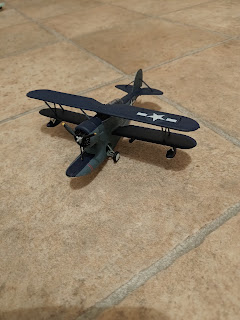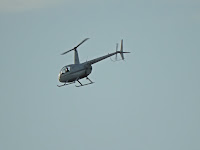This is a Hasegawa 1/72 kit with after market decals which were actually a bit of a pain!
Aviation images
In Reach of The Skies: Aviation related stories from a life long enthusiast
Monday 20 November 2023
Nakajima B5N Kate
Next off the production line is this Kate torpedo bomber. The Kate served Japanese forces throughout WWII including the infamous raid on Pearl Harbour.
Tuesday 14 November 2023
Catalina N423RS
Looking through some old snaps I came across this image of a Catalina in Greenpeace livery that I had forgotten all about, taken around 1998 after the plane had been used in the Med in the fight against illegal fishing. On checking I realised that it was the same Catalina, by then sporting RAF Coastal Command colours, that I had seen at North Weald when visiting with my mate Gaz back in 2010. On that day work was being undertaken to get the engines running and a very smokey affair it was too.
Subsequently the aircraft was dismantled and went over to America in 2015. The good news is that, although still in bits, the aircraft was acquired by The Tunison Foundation of Poughkeepsie in June of this year as a restoration project. Hopefully this means that it will fly again.
Monday 13 November 2023
Boeing Kaydet/Stearmam
An old Revell kit of the American biplane trainer.Introduced in the 1930s over 10,000 were produced and many stil fly today. This kit is straight out of the box with some after market stars and stripes.
Wednesday 8 November 2023
Monday 30 October 2023
Grumman Duck
The only real example of this amphibious biplane that I recall seeing was part of the Erickson Collection that we visited in America in 2019. This is a 1/72 scale Airfix kit that cost all of 99p plus post but it was missing the starboard lower wing and port rear elevator but I managed to knock up replacements from scrap and it came out OK.
Sunday 22 October 2023
Friday 13 October 2023
Ford Airfield
Ford is a former airfield in West Sussex. This is from the ABCT website:
Ford, the world’s most famous intruder airfield, originally opened in March 1918 for use by RAF and American squadrons prior to closing in January 1920. The site reopened for civil flying ten years later, becoming involved in early air-to-air flight refuelling experiments, and resumed military aviation connections from the end of 1937. Fleet Air Arm training units primarily employed Ford into World War Two but their base suffered extremely heavy damage and loss of life following a ferocious attack by Junkers Ju 87s on August 18 1940. As a result the RAF quickly returned and Ford gained prominence in its best known role as various intruder squadrons – notably No 23 – roamed enemy-occupied territory to attack targets at will with considerable success. Operational duties gradually altered to also include fighter-bomber sorties as the airfield became heavily involved through the vital D-Day period and beyond.
Ford kept busy during peacetime as the Fleet Air Arm returned in the summer of 1945 to enable first-line squadrons to form and work up to full readiness. Another major event occurred in August 1951 when No 800 Squadron formed at HMS Peregrine with Supermarine Attackers to become the first naval jet fighter unit. Eventually Ford was paid off or closed in November 1958 but this did not signal the end of flying by any means as civil aircraft continued to employ the airfield until all flying finally ceased in 1980. Today a wide variety of alternative uses which have become noticeable since the late 1950s are evident, ranging from industry and peripheral housing to leisure, an open prison and a popular Sunday market.
In a brief visit last weekend I snapped the Hawker Hunter (see below) that now gaurds the entrance to the market area and also visited the little memorial garden.
Thursday 12 October 2023
Dunkeswell
Dunkeswell opened in 1943 and was handed to the USAAF who flew Liberators on anti submarine duties and helped the war against the U - Boat menace. Post war the airfield was used briefly by the RAF before being closed in 1946 and sold in 1948. However, this was not the end of flying activities and today the field opearates as a civilian airstrip for light aircraft. Several old buildings survive and are in use on the nearby industrial estate, there is a memorial to wartime use and also a small heritage centre that is free to enter. We went for a look last week after doing the Upottery center whic is only a few miles away.
Subscribe to:
Posts (Atom)

















































